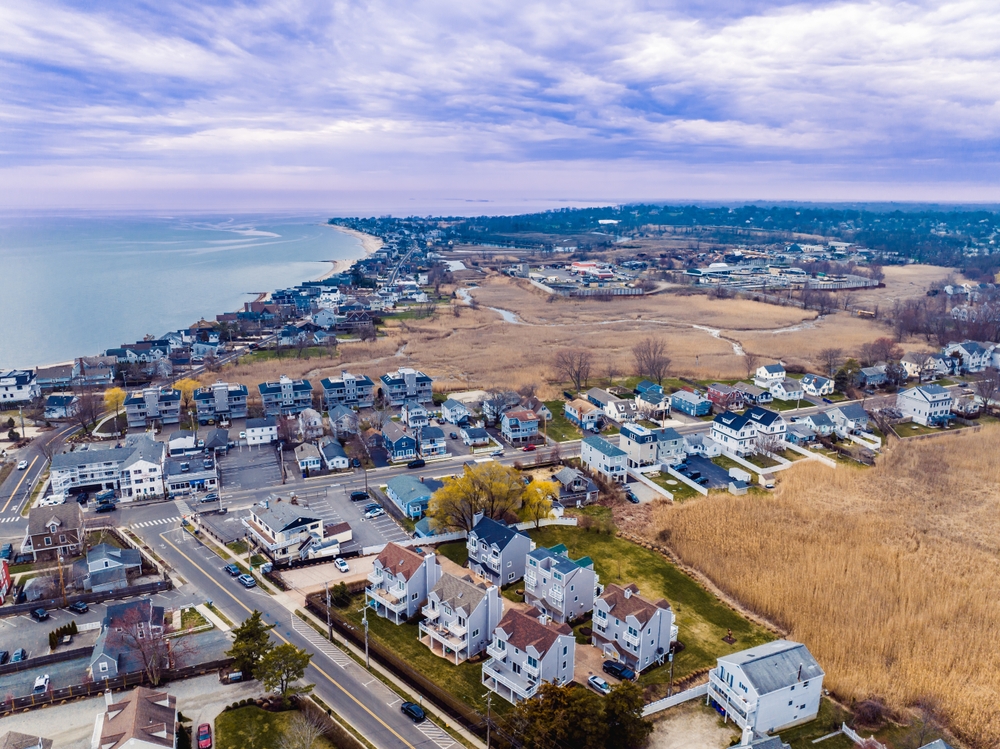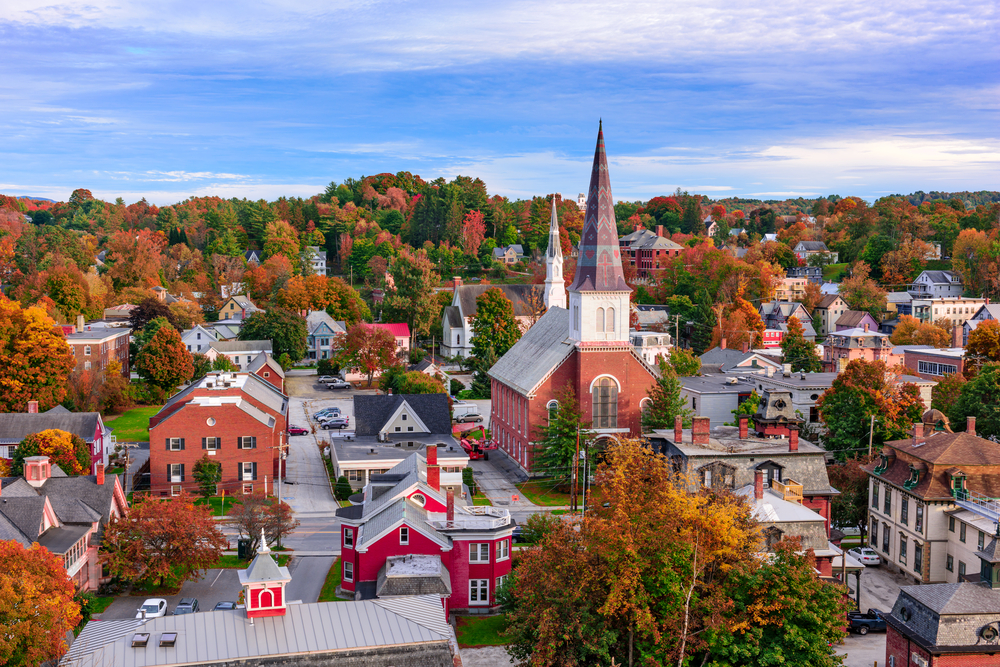Property taxes, the most stealthy of financial drainers, often lurk in the shadows, ready to ambush unsuspecting homeowners. In some U.S. states, these taxes can pull you into a financial quicksand faster than you can say “appraisal.” While location, location, location might be your mantra when buying property, understanding the tax implications of that charming Colonial in Connecticut might be just as crucial. Here we delve into the states where property taxes could leave your wallet a little lighter, and why you might want to consider more than just square footage when making your real estate decisions.
1. New Jersey’s Tax Tangle

New Jersey, the Garden State, is known for its high property taxes that can feel more like a thorn than a rose. With property tax rates averaging around 2.21%, it’s no surprise that homeowners might find themselves doing double takes at their annual bills. According to a study by WalletHub, New Jersey consistently ranks as one of the states with the highest property tax burden. Many residents often find themselves in a love-hate relationship with their homes, torn between the state’s bustling cultural scene and the hefty tax obligations.
But why exactly are property taxes so high in New Jersey? The answer lies in a combination of factors, including the state’s education funding model, which heavily leans on property taxes. Additionally, the dense population and the high cost of living drive the demand for public services, further pushing tax rates upward. It’s a complex equation that leaves many homeowners feeling trapped, dreaming of more tax-friendly pastures.
2. Illinois’ Tax Burden

Illinois might be famous for its deep-dish pizza and vibrant city life, but it’s also notorious for its staggering property taxes. With an average rate hovering around 2.05%, Illinois residents often find themselves shelling out a significant chunk of their income to maintain their homes. The state’s fiscal challenges, coupled with budgetary constraints, mean that homeowners often bear the brunt of revenue generation. This situation often results in eye-watering tax bills that can put a damper on the joy of homeownership.
So, what’s fueling the tax fire in Illinois? The state faces a litany of financial woes, including underfunded pensions and a high reliance on property taxes for local funding. These factors create a cycle that’s hard to break, with residents often caught in the crossfire. The result is a state where people are constantly weighing the benefits of staying against the financial pressures of leaving.
3. Connecticut’s Costly Charm

Connecticut’s picturesque landscapes and historic homes might be enchanting, but the state’s property taxes can feel more like a curse than a blessing. Averaging around 2.14%, Connecticut’s property tax rates are among the highest in the nation, often catching new homeowners off guard. According to data from the Tax Foundation, Connecticut’s tax structure heavily relies on property taxes as a primary revenue source. This reliance often translates to higher costs for homeowners who are simply trying to enjoy their slice of New England charm.
The state’s high taxes are partly driven by its need to fund public education and infrastructure, both of which are critical to maintaining quality of life. Additionally, efforts to mitigate financial disparities across towns have led to more uniform tax rates, which can feel burdensome to homeowners. The combination of these factors means that living in Connecticut requires both a love for its natural beauty and a robust financial plan. For many, the allure of the state’s charm is worth the price, but it’s a decision that requires careful consideration.
4. New Hampshire’s Tax Paradox

New Hampshire, with its picturesque towns and scenic vistas, presents a tax paradox that can leave homeowners scratching their heads. The state boasts no income tax and no sales tax, but it makes up for this with property tax rates averaging around 2.05%. This means that while you might save in some areas, your property tax bill could more than make up for it. Living in New Hampshire often involves balancing these financial trade-offs, especially for those who value fiscal savings in other areas.
What drives these high property taxes in New Hampshire? The state’s reliance on property taxes as a primary revenue source is largely due to the absence of other major taxes. This framework places a heavy burden on homeowners who essentially subsidize the state’s lack of sales and income taxes. For many, the trade-off allows for a lifestyle free from other tax burdens, but it’s a reality that requires clear understanding and acceptance from those planting roots in this granite land.
5. Vermont’s Tax Terrain

In Vermont, the beauty of its rolling hills and lush forests comes with a less idyllic property tax scenario. Averaging around 1.81%, Vermont’s property taxes can still pack a punch for homeowners seeking solace in its serene settings. As highlighted in research by the Vermont Department of Taxes, these taxes are crucial for funding local schools and government services. This reliance on property taxes means that owning a home in Vermont requires more than just enjoying the snow-capped peaks — it demands financial preparedness.
The state’s unique landscape and dispersed population contribute to the need for higher property taxes. Additionally, Vermont’s commitment to maintaining its environment and public services means that homeowners shoulder a significant portion of these costs. For many, the trade-off is worth it, as the quality of life and access to nature are unparalleled. However, it’s crucial for potential homeowners to understand these financial implications before making the leap to this northern haven.
6. Texas and Its Taxing Reality

Texas might woo you with its vast landscapes and cultural diversity, but its property taxes can be a sobering reality. With rates averaging around 1.80%, Texans often find themselves contributing a substantial portion of their income to property taxes. This might come as a surprise in a state that famously has no income tax, leading many to underestimate the true cost of living there. For those considering a move to the Lone Star State, understanding these taxes is essential to avoid financial surprises.
The high property tax rates in Texas can be attributed to the state’s model of funding public education and local government. Without income taxes to rely on, property taxes become a critical revenue source, translating to higher bills for homeowners. This system can significantly impact budgets, especially for those new to the state or unfamiliar with its tax structure. As with many financial decisions, it’s all about balancing the pros and cons to find what suits your lifestyle best.
7. Wisconsin’s Wallet Woes

Cheeseheads may delight in Wisconsin’s culinary offerings, but property taxes in the state are something less appetizing. Averaging around 1.68%, Wisconsin’s property taxes can be a hefty line item in a homeowner’s budget. According to the Wisconsin Policy Forum, these taxes are vital for funding education and local services, which puts a strain on those trying to manage household finances. As a result, homeowners must be savvy and strategic to thrive financially in this northern state.
Wisconsin’s property tax rates are influenced by a mix of state policies and funding needs. The balance of local and state funding for schools means that property taxes are a major source of revenue, leading to higher rates. For many, the state’s rich culture and community make the taxes a worthwhile trade-off. However, it requires a keen understanding of the financial landscape to make the most of living in this Midwestern gem.
8. Rhode Island’s Tax Ripple

Rhode Island might be small in size, but its property taxes can cast a long shadow over its homeowners. With an average rate of about 1.53%, residents often find themselves grappling with significant tax responsibilities. The state’s reliance on property taxes for funding essential services means that these costs are unlikely to diminish anytime soon. For those calling the Ocean State home, it’s important to keep these financial realities in mind.
Several factors contribute to the high property taxes in Rhode Island, including its dense population and the demand for quality public services. Additionally, the state’s focus on maintaining infrastructure and educational standards puts pressure on property tax revenue. While Rhode Island offers a vibrant culture and picturesque landscapes, potential homeowners should be aware of these financial dynamics. The decision to live here involves weighing the overall quality of life against the fiscal commitments required.
9. Nebraska’s Hidden Strain

Nebraska might be better known for its wide-open plains and agricultural backbone, but its property taxes often leave homeowners feeling boxed in. With an average effective tax rate of about 1.67%, many Nebraskans pay more than the national average. According to the Tax Foundation, the state’s reliance on property taxes to fund schools and local governments has long been a point of contention. For families living on fixed or modest incomes, these costs can be especially challenging.
The state’s heavy agricultural presence adds another wrinkle, as farmland values drive up property assessments and, in turn, the taxes owed. While Nebraska offers a slower pace of life and tight-knit communities, the financial squeeze from property taxes often tempers the appeal. Homeowners here need to balance the benefits of rural living with the reality of higher-than-expected bills.
10. Michigan’s Midwest Trade-Off

Michigan offers scenic lakes, thriving cities like Detroit and Ann Arbor, and a strong sense of community. But property taxes—averaging around 1.54%—can weigh heavily on homeowners. A study from WalletHub consistently places Michigan among the top states for property tax burdens, making homeownership less affordable than many expect in the Midwest.
The state’s high reliance on property taxes stems from a mix of funding needs for public schools and infrastructure. Though some areas of Michigan are more affordable in terms of home prices, the tax rates can eat into those perceived savings. For many residents, the cost of living equation becomes a tricky balancing act, where the natural beauty and cultural hubs are weighed against persistent financial strain.
11. Nebraska’s Neighbor Iowa’s Quiet Bite

Iowa often conjures images of quiet farmland and family-centered communities, but property taxes here are nothing to dismiss. Averaging around 1.49%, the state’s tax rates still surpass the national average. According to state fiscal reports, Iowa’s commitment to education funding and local government services places much of the responsibility on property owners.
While Iowa’s housing market tends to be more affordable than coastal states, the ongoing tax obligations can surprise new homeowners. The trade-off is clear: lower purchase prices up front, but steady, sometimes steep, tax bills year after year. For many residents, it’s a reminder that affordability is about more than just the sticker price of a home.
12. Ohio’s Taxing Reality

Ohio may boast a mix of bustling urban centers and charming small towns, but its property taxes frequently hit homeowners harder than expected. With an average effective rate of about 1.57%, Ohio ranks above the national average. Research from the Lincoln Institute of Land Policy points to the state’s reliance on property taxes to maintain public schools and local infrastructure.
The result is a financial pressure that can feel at odds with Ohio’s otherwise moderate cost of living. While the state offers affordability in areas like housing prices and day-to-day expenses, property taxes often balance out those savings. For those considering Ohio, it’s essential to factor in not just what you’ll pay for your home, but what you’ll continue paying long after the purchase.
This article is for informational purposes only and should not be construed as financial advice. Consult a financial professional before making investment or other financial decisions. The author and publisher make no warranties of any kind.








